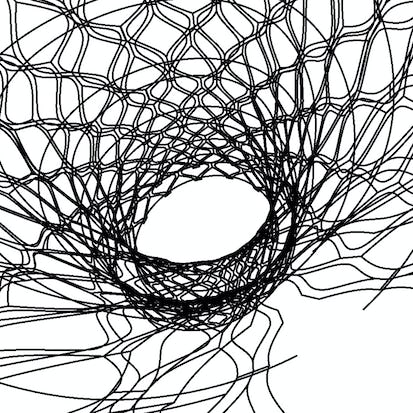- Level Foundation
- المدة 27 ساعات hours
- الطبع بواسطة University of Michigan
-
Offered by

عن
Why should a designer learn to code? As our world is increasingly impacted by the use of algorithms, designers must learn how to use and create design computing programs. Designers must go beyond the narrowly focused use of computers in the automation of simple drafting/modeling tasks and instead explore the extraordinary potential digitalization holds for design culture/practice. Structured around a series of fundamental design problems, this course will show you Python code in terms of its rules and syntax, and what we can do with it in its application and design. So, by the end of this course, you will know the fundamentals of Python and Rhino script, but importantly, through the lens of their application in geometrically focused design lessons and exercises. Subjects covered in this course - An introduction to Design Computing as a subject and why designers should learn to code. - The fundamentals of coding in the Python scripting language. By the end of the course students will be familiar with the basic structure and syntax of this language. - The understanding and application of Rhinoscriptsyntax, a native coding language in Rhinoceros that's imported into Python, which allows one to create and control geometries through authoring code. - The application of Procedural Logics - the structuring of coding systems to produce variable geometric form. - The output of geometries in still and animate forms.الوحدات
Welcome to the course
1
Discussions
- why should a designer learn to code?
2
Videos
- course introduction
- what is design computing?
3
Readings
- Syllabus
- diversity, equity, and inclusion statement & syllabus
- how to set up your environment
Introduction to python.rhinoscript
4
Videos
- introduction to python.rhinoscript lesson
- introduction to rhinospace.pythonspace
- input | processing | output
- getting help
2
Readings
- why you should learn to write programs
- rhino(script) and python cheat sheet
Variables + data types
1
Assignment
- variables and data types quiz
5
Videos
- variables - an introduction
- data types - an introduction
- variables demo
- data types
- debugging lite
2
Readings
- module overview
- python essentials + variables, expressions, and statements
What's the point!
1
Assignment
- points quiz
2
Videos
- what's the point!? lesson
- what's the point!? demo
1
Readings
- python essentials
Points | Lines | Shapes
5
Videos
- finding points from lines
- transformation | rotation
- transformation | scale
- transformation | copy/move
- transformation | putting it all together
1
Readings
- python essentials
Assignment_1: points, lines, shapes
1
External Tool
- assignment_1: points, lines, shapes
1
Videos
- design critique: model + code
3
Readings
- assignment_1: points, lines, shapes | instructions
- self-assessment rubric
- design critique guidelines
Tuples and lists
2
Assignment
- Tuples Quiz
- Lists Quiz
9
Videos
- tuples lesson
- lists lesson
- tuples demo
- lists demo
- points and lists
- curves and lists
- bone structure: example 01
- bone structure: example 02 [optional]
- bone structure: example 03 [optional]
2
Readings
- module overview
- tuples and lists
Assignment_2.1: bone structures
1
External Tool
- assignment_2.1: bone structure
3
Readings
- assignment_2.1: bone structures | instructions
- self-assessment rubric
- design critique guidelines
Iteration (looping)
1
Assignment
- iteration quiz
6
Videos
- iteration (looping) lesson
- simple incremental loop
- point loop
- nested loop: 2D point matrix [part 01]
- nested loop: 2D point matrix [part 02]
- attractor point
1
Readings
- looping
Operators
1
Assignment
- operators quiz
1
Videos
- operators lesson
1
Readings
- operators
Conditionals
1
Assignment
- conditionals quiz
4
Videos
- conditionals lesson
- random module
- conditionals example
- not equal to
1
Readings
- conditional execution
Assignment_2.2: patterning
1
External Tool
- assignment_2.2: patterning
3
Readings
- assignment_2.2: patterning |instructions
- self-assessment rubric
- design critique guidelines
Debugging
1
Assignment
- debugging quiz
2
Videos
- debugging lesson
- debugging demo
2
Readings
- module overview
- debugging
Dictionaries
1
Assignment
- dictionaries quiz
6
Videos
- dictionaries lesson
- dictionaries
- simple dictionary
- 2D point matrix dictionary [part 01]
- 2D point matrix dictionary [part 02]
- 2D point matrix bone structure
1
Readings
- dictionaries
Assignment_3.1: patterning dictionary
1
External Tool
- assignment_3.1: patterning dictionary
3
Readings
- assignment_03.1: patterning dictionary | instructions
- self-assessment rubric
- design critique guidelines
Functions
1
Assignment
- functions quiz
5
Videos
- functions lesson
- function organization
- mid-point function
- pulled point function
- pulled point example
1
Readings
- functions
Circle animation
3
Videos
- circle animation example
- patterning animation example
- compiling GIF animation
Assignment_3.2: patterning animation
1
External Tool
- assignment_3.2: patterning animation
3
Readings
- assignment_3.2: patterning animation | instructions
- self-assessment rubric
- design critique guidelines
3D point matrix
5
Videos
- 3D point matrix lesson
- 3D point matrix
- 3D point matrix spheres
- setting-up surfaces
- 3D point matrix cones
2
Readings
- module overview
- surfaces
Planes
5
Videos
- planes lesson
- planes from points
- planes on a curve
- 3D matrix circles
- 3D matrix wall example
1
Readings
- lanes
Assignment_4.1: 3D matrix wall
1
External Tool
- assignment_4.1: 3D matrix wall
3
Readings
- assignment_4.1: 3D matrix wall |instructions
- self-assessment rubric
- design critique guidelines
NURB surfaces - 2D geometry
5
Videos
- NURB surfaces - 2D lesson
- surface points
- 2D surfaces example 01
- 2D surfaces example 02
- 2D surfaces example 03
2
Readings
- module overview
- surfaces
Vectors
5
Videos
- vectors lesson
- vectors
- vectors |unitize and scale
- vector | add and subtract
- surface normal vectors
1
Readings
- points and vectors
NURB surfaces - 3D geometry
9
Videos
- NURB surfaces - 3D lesson
- 3D surface matrix
- 3D surface matrix attractor | scale
- 3D surface matrix attractor | vector
- 3D surface matrix attractor | vector: multiple points
- 3D surface matrix attractor | pinch
- rendering color
- 3D surface matrix example 01
- 3D surface matrix example 02
1
Readings
- surfaces
Assignment_5.1: modular tower
1
External Tool
- assignment_5.1: modular tower
3
Readings
- assignment_5.1: modular tower | instructions
- self-assessment rubric
- design critique guidelines
Final portfolio
1
External Tool
- final portfolio
1
Videos
- outro
4
Readings
- final portfolio | instructions
- design critique guidelines
- further reading resources
- post-course survey
Auto Summary
Learn 3D modeling with Rhinoceros and Python in this foundational Design Computing course. Ideal for designers, it emphasizes coding's role in modern design. The course covers Python syntax, Rhinoscriptsyntax, and procedural logics to create dynamic geometries. Taught by industry experts, it spans 1620 minutes and offers flexible subscription options: Starter, Professional, and Paid. Perfect for those eager to elevate their design skills with computational techniques.

Glenn Wilcox


